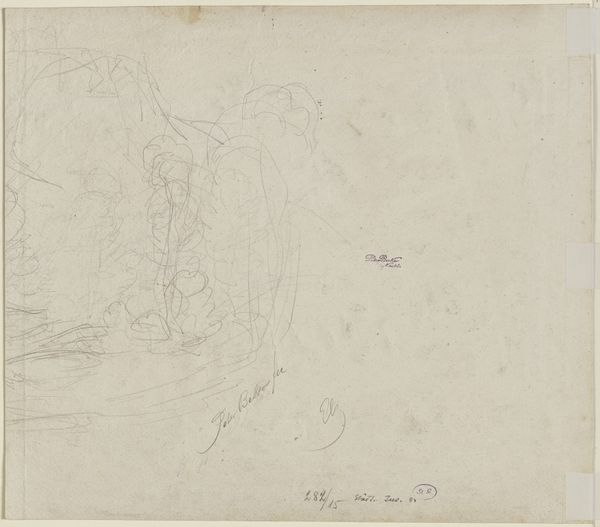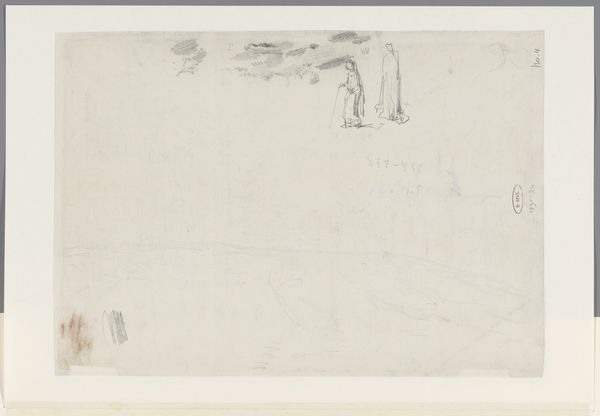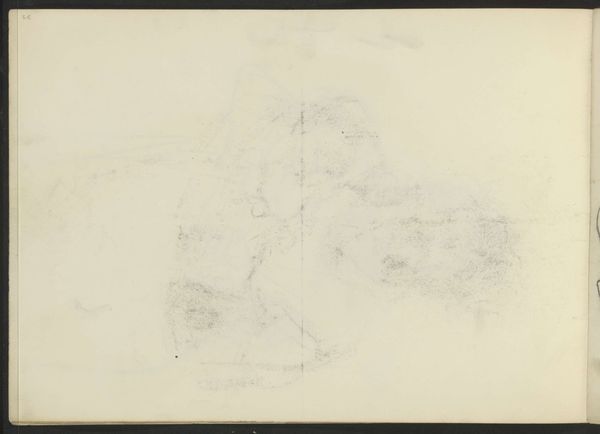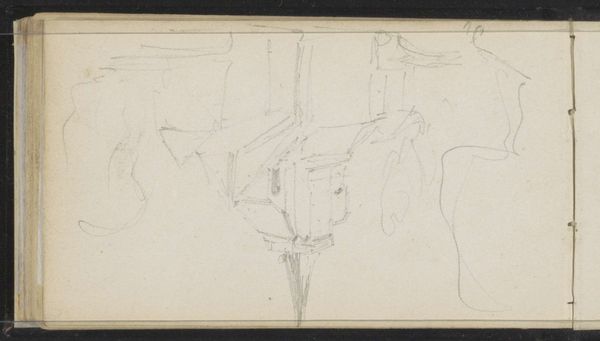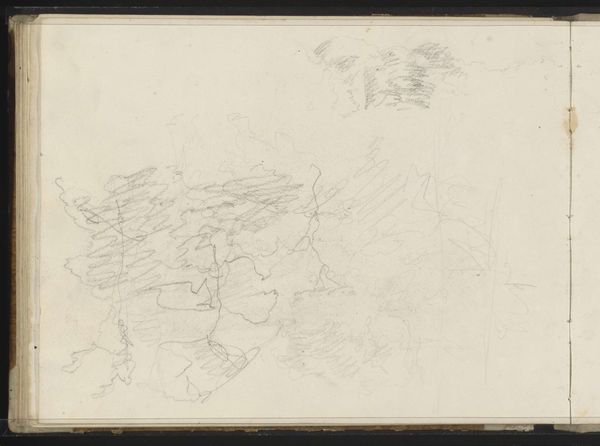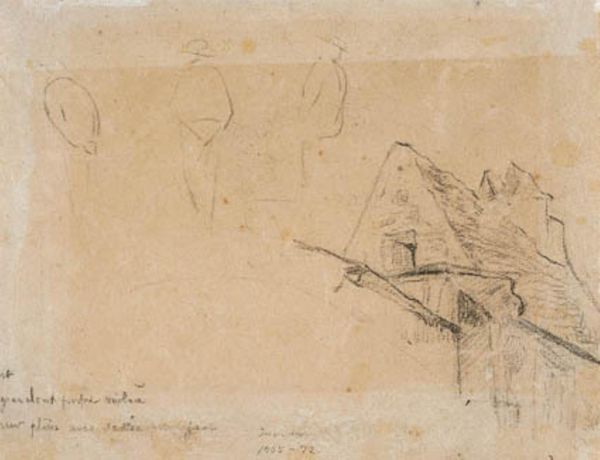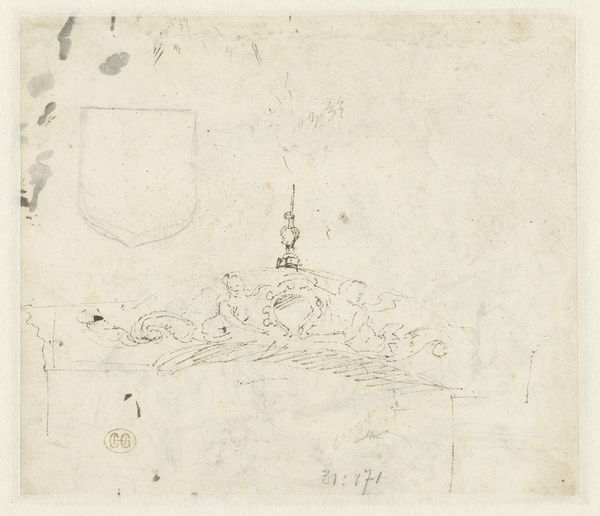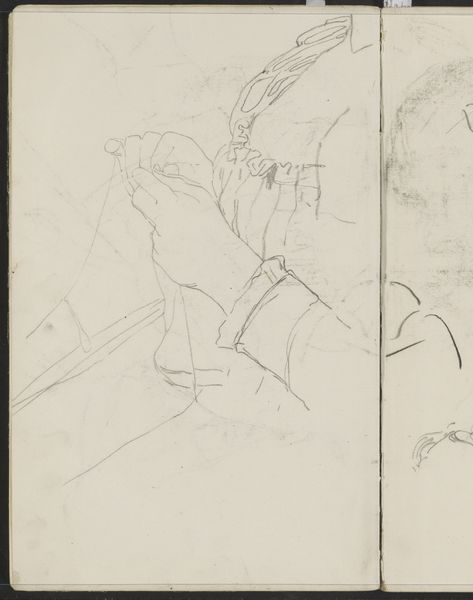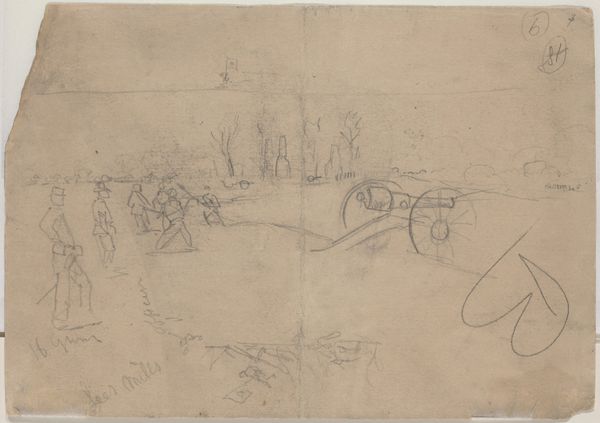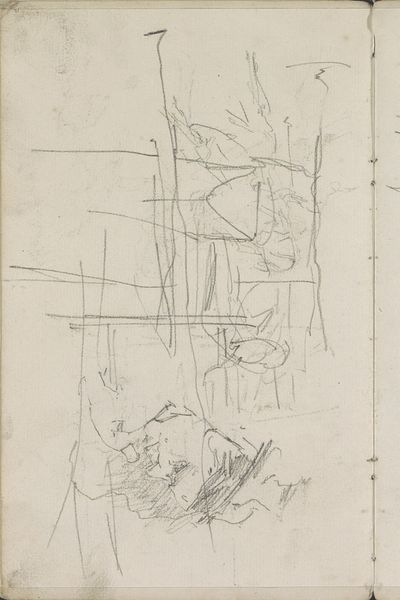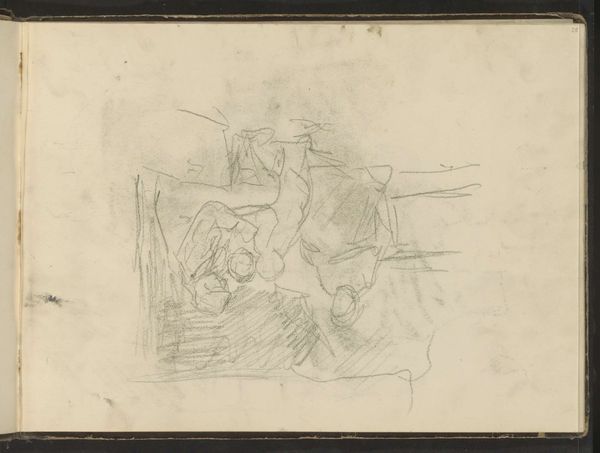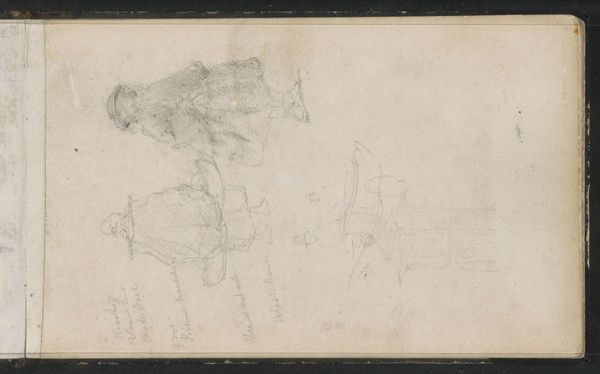
Dimensions: 160 mm (height) x 201 mm (width) (bladmaal)
Editor: This is Fritz Syberg’s pencil drawing, "Right Side of the Grave Woman," from 1895. The hurried, sketchy quality creates a haunting atmosphere. How do you interpret this work? Curator: The apparent incompleteness is indeed evocative. Considering Syberg's engagement with social realism, I see this not merely as a landscape study, but as a poignant comment on the lives intertwined with loss and labor. Think about it: What does it mean to depict only *part* of the grave? The *right side* implies that other perspectives and other sides exist that might have remained invisible, especially from certain class and gender positions. Editor: That's fascinating. I was focused on the visible, the sketch itself and hadn't thought about other views and angles. What would those positions be? Curator: Perhaps, a perspective from women’s experience of grieving? Syberg might also be pointing toward a critique of how death and mourning were and perhaps still are commodified. Or what histories might lie hidden or marginalized? How do such silences affect our collective understanding of loss and resilience? Editor: So you’re suggesting it invites us to confront these historical silences and biases in representation? Curator: Precisely. Art, in its incompleteness, allows us to grapple with those difficult questions. It reveals absences and asks, "Who isn’t here and who decides that they should not be?" Syberg's technique, mirroring that supposed incompletion, serves as an entry point to this social inquiry. Editor: I’m now seeing so much more than just an unfinished landscape. This lens really connects art to social concerns. Curator: And, that’s where art's potential for inciting dialogue becomes truly meaningful.
Comments
No comments
Be the first to comment and join the conversation on the ultimate creative platform.
